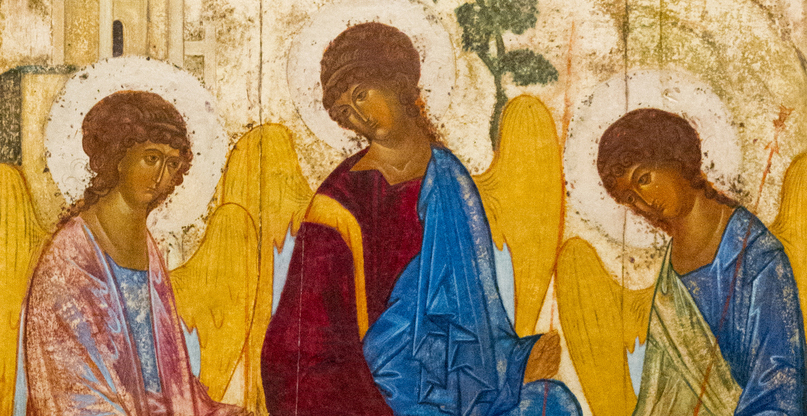The first reading from Proverbs is a beautiful, poetic description of how the Holy Spirit was present and active in the creation of the world. Some of the words that are used to describe the Spirit within the text are: craftsman, delight, forerunner, playful. It closes with the image of the Spirit finding “delight in the human race.” There are so many images of the Holy Spirit in Scripture and these are some of the neatest.
In the second reading, Paul expresses how in Jesus, we have peace, and through that peace we have the Holy Spirit who flows from the Father. Paul says it best; that, “because the love of God has been poured out into our hearts through the Holy Spirit that has been given to us.” God pours Godself into our hearts to fill them so that we can be truly happy. We don’t have to try and fill ourselves with anything else, because that love is there for the taking. Anything else will disappoint, but as Paul says, “hope does not disappoint”.
Jesus tells the Apostles, in the Gospel, that while they won’t be able to bear everything that will be revealed to them at that point, the Holy Spirit will make them able. When they received the Holy Spirit, they were able to experience God as fully as humans can on earth. The Father puts the desire in our hearts and Jesus delivers what we need to access it—the Holy Spirit.
You can read this Sunday’s readings here:
Scriptures for Most Holy Trinity Sunday, Cycle C
Break Open the Word with Your Family
Kids
Your family is a sign of God’s love. God is a family who creates things. How does the way that you love one another in your family make creation? How do you create things with each other’s help? (food, crafts, gifts, gardens, caring for others…)
Teens
The Trinity is one of the most foundational mysteries of our faith. Since we are a reflection of the Trinity we might understand a little piece of it this way: each of us can be a child, sibling, friend, student, have particular hobbies or skills and may one day be parents, spouses, aunts and uncles, and have a job. We are many different people in one sense, but the same person, in reality. How does the complexity of who you are help you to understand the Trinity better?
Adults
One of the clearest ways to see the Trinity in action within Scripture is in the Creation stories (chapters one and two of Genesis). Read them with your family with the mind that the Father speaks, Jesus is the Word, and the Spirit is the Breath of God. How does reading it this way help you to understand the Trinity better?
A little lectio
The ancient practice of prayerfully reflecting on bits of Scripture is known as lectio divina. Want to try it out with your family? Head over to Lectio Divina for Kids to find out how to adapt this prayer practice for your kids.
A little Bible study
Want to do a little Bible study with your kids? Here are some tips:
- During Ordinary Time, the Church pairs the Old Testament and New Testament readings in a way that each sheds light on the other. Ask your kids to look for the common theme connecting the two readings. (Sometimes it’s obvious, sometimes it is subtle.) How does the “dialogue” between the readings help you understand them better?
- Get a New American Bible, Revised Edition, and take a look at the footnotes for these readings. How do they change your understanding of what is going on?
- Take a look at the context for the readings—what happens before, or after?
- Read the NABRE’s introduction to the book of the Bible that the readings are taken from. How does that help you understand the readings?
- If you don’t have a copy of the NABRE at home, you can view it online at the USCCB website at the Daily Readings web page. (The link will take you to today’s reading; click forward or backward on the dates to get to Sunday’s readings.)
For even more resources for breaking open this Sunday’s readings, head over to The Sunday Website.



